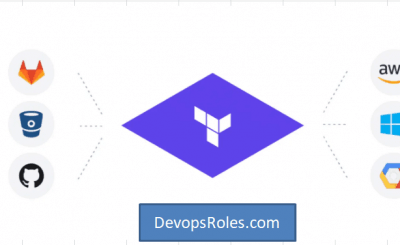The rapid advancement of generative AI has created an unprecedented demand for efficient and reliable deployment strategies. Manually configuring infrastructure for these complex models is not only time-consuming and error-prone but also hinders scalability and maintainability. This article addresses these challenges by demonstrating how Terraform, a leading Infrastructure as Code (IaC) tool, significantly streamlines and optimizes Generative AI Deployment. We’ll explore practical examples and best practices to ensure robust and scalable deployments for your generative AI projects.
Table of Contents
Understanding the Challenges of Generative AI Deployment
Deploying generative AI models presents unique hurdles compared to traditional applications. These challenges often include:
- Resource-Intensive Requirements: Generative AI models, particularly large language models (LLMs), demand substantial computational resources, including powerful GPUs and significant memory.
- Complex Dependencies: These models often rely on various software components, libraries, and frameworks, demanding intricate dependency management.
- Scalability Needs: As user demand increases, the ability to quickly scale resources to meet this demand is crucial. Manual scaling is often insufficient.
- Reproducibility and Consistency: Ensuring consistent environments across different deployments (development, testing, production) is essential for reproducible results.
Leveraging Terraform for Generative AI Deployment
Terraform excels in addressing these challenges by providing a declarative approach to infrastructure management. This means you describe your desired infrastructure state in configuration files, and Terraform automatically provisions and manages the necessary resources.
Defining Infrastructure Requirements with Terraform
For a basic example, consider deploying a generative AI model on Google Cloud Platform (GCP). A simplified Terraform configuration might look like this:
terraform {
required_providers {
google = {
source = "hashicorp/google"
version = "~> 4.0"
}
}
}
provider "google" {
project = "your-gcp-project-id"
region = "us-central1"
}
resource "google_compute_instance" "default" {
name = "generative-ai-instance"
machine_type = "n1-standard-8" # Adjust based on your model's needs
zone = "us-central1-a"
boot_disk {
initialize_params {
image = "debian-cloud/debian-9" # Replace with a suitable image
}
}
}This code creates a single virtual machine instance. However, a real-world deployment would likely involve more complex configurations, including:
- Multiple VM instances: For distributed training or inference.
- GPU-accelerated instances: To leverage the power of GPUs for faster processing.
- Storage solutions: Persistent disks for storing model weights and data.
- Networking configurations: Setting up virtual networks and firewalls.
- Kubernetes clusters: For managing containerized applications.
Automating the Deployment Process
Once the Terraform configuration is defined, the deployment process is automated:
- Initialization:
terraform initdownloads necessary providers. - Planning:
terraform planshows the changes Terraform will make. - Applying:
terraform applycreates and configures the infrastructure.
This automation significantly reduces manual effort and ensures consistent deployments. Terraform also allows for version control of your infrastructure, facilitating collaboration and rollback capabilities.
Optimizing Generative AI Deployment with Advanced Terraform Techniques
Beyond basic provisioning, Terraform enables advanced optimization strategies for Generative AI Deployment:
Modularization and Reusability
Break down your infrastructure into reusable modules. This enhances maintainability and reduces redundancy. For example, a module could be created to manage a specific type of GPU instance, making it easily reusable across different projects.
State Management
Properly managing Terraform state is crucial. Use a remote backend (e.g., AWS S3, Google Cloud Storage) to store the state, allowing multiple users to collaborate and manage infrastructure effectively. This ensures consistency and allows for collaborative management of the infrastructure.
Variable and Input Management
Use variables and input variables to parameterize your configurations, making them flexible and adaptable to different environments. This allows you to easily change parameters such as instance types, region, and other settings without modifying the core code. For instance, the machine type in the example above can be defined as a variable.
Lifecycle Management
Terraform’s lifecycle management features allow for advanced control over resources. For example, you can use the lifecycle block to define how resources should be handled during updates or destruction, ensuring that crucial data is not lost unintentionally.
Generative AI Deployment: Best Practices with Terraform
Implementing best practices ensures smooth and efficient Generative AI Deployment:
- Adopt a modular approach:
- This improves reusability and maintainability.
- Utilize version control:
- This ensures traceability and enables easy rollbacks.
- Implement comprehensive testing:
- Test your Terraform configurations thoroughly before deploying to production.
- Employ automated testing and CI/CD pipelines:
- Integrate Terraform into your CI/CD pipelines for automated deployments.
- Monitor resource usage:
- Regularly monitor resource utilization to optimize costs and performance.
Frequently Asked Questions
Q1: Can Terraform manage Kubernetes clusters for Generative AI workloads?
Yes, Terraform can manage Kubernetes clusters on various platforms (GKE, AKS, EKS) using appropriate providers. This enables you to deploy and manage containerized generative AI applications.
Q2: How does Terraform handle scaling for Generative AI deployments?
Terraform can automate scaling by integrating with auto-scaling groups provided by cloud platforms. You define the scaling policies in your Terraform configuration, allowing the infrastructure to automatically adjust based on demand.
Q3: What are the security considerations when using Terraform for Generative AI Deployment?
Security is paramount. Secure your Terraform state, use appropriate IAM roles and policies, and ensure your underlying infrastructure is configured securely. Regular security audits are recommended.

Conclusion
Optimizing Generative AI Deployment is crucial for success in this rapidly evolving field. Terraform’s Infrastructure as Code capabilities provide a powerful solution for automating, managing, and scaling the complex infrastructure requirements of generative AI projects. By following best practices and leveraging advanced features, organizations can ensure robust, scalable, and cost-effective deployments. Remember that consistent monitoring and optimization are key to maximizing the efficiency and performance of your Generative AI Deployment.
For further information, refer to the official Terraform documentation: https://www.terraform.io/ and the Google Cloud documentation: https://cloud.google.com/docs. Thank you for reading the DevopsRoles page!
